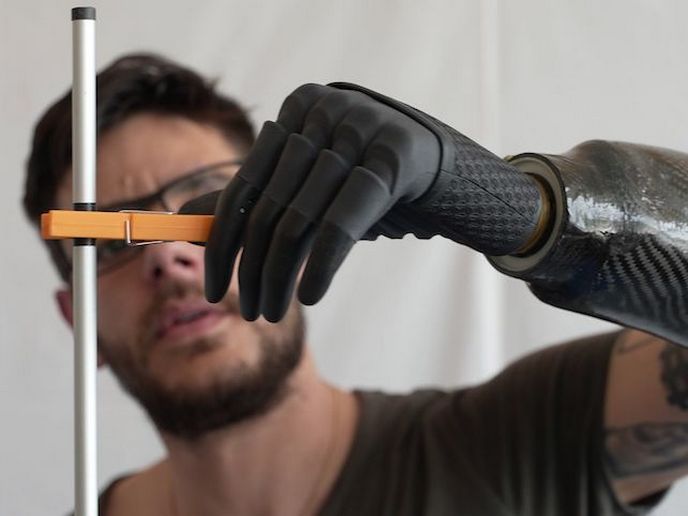Redefining prosthetic limbs
Prosthetic hands have come a long way from the use of hooks. Thanks to new technologies and advancements in robotics, many amputees now benefit from highly functional prosthetics with remarkable levels of dexterity. Initiatives such as the EU-funded MYKI(opens in new window) project aim to take this one step further. “Our goal is to develop and clinically assess a dexterous hand prosthesis that can be naturally controlled and perceived by the amputee,” says Christian Cipriani, a researcher at the BioRobotics Institute(opens in new window) and the project’s lead investigator. To do so, the project, which received support from the European Research Council(opens in new window), turned to technology. “The technologies developed within the project resulted in the first in-human implant of the myokinetic interface in a below-the-elbow amputee,” adds Cipriani.
Introducing the myokinetic interface
The myokinetic interface is a radically new human-machine interface (HMI) based on magnetic principles. The system involves a multitude of implantable magnets and external magnetic readers/drivers. Once implanted into an amputee’s muscles, the interface can localise the movement of the magnets and induce subtle movements in them. “As a magnet is implanted, it travels with the muscle it is located in, and its localisation provides a direct measure of the contraction/elongation of that muscle, which is voluntarily controlled by the central nervous system,” explains Cipriani. “This makes it possible to decode the efferent signals sent by the brain by observing a by-product of the muscle fibres recruitment.” On the ‘other hand’, a movement induced in the implanted magnet by the external driver could provide a perceivable stimulus that is conveyed to the brain by means of the peripheral sensory receptors present in the muscle or in the neighbouring skin. This function could make it possible to convey tactile and/or proprioceptive sensory information to the brain, thus restoring the physiological sensorimotor control loop. “With passive magnetic implants, which do not require a power supply or wires, and transcutaneous readers/drivers, MYKI successfully implemented a bidirectional wireless HMI with potentially far greater capabilities than state-of-the-art interfaces,” notes Cipriani.
A breakthrough in biomedical engineering
After approval by the local ethics community and the Italian Ministry of Health, the project conducted the first clinical trial of the myokinetic interface. After having the magnets implanted, a volunteer amputee wore and used the self-contained prosthesis arm. According to Cipriani, initial results of the trial are very promising. “The first ever in-human study of a myokinetic interface is undoubtably a major breakthrough for the biomedical engineering field and a success for European research,” he says. “Its importance is further highlighted by the many scientific papers, projects and leading experts that are now embracing our myokinetic approach.”
Looking beyond the hand
While the MYKI project focused on the hand, the myokinetic interface could be used in all upper limb amputations – from partial hand amputations up to shoulder disarticulation. There’s also the potential for it to be adapted to the needs of lower limb prostheses and exoskeletons. “We hope our interface paves the way towards a new generation of bionic limbs and assistive devices,” concludes Cipriani. “By restoring the natural sensory-motor control loop, such limbs and devices would have a substantial impact on the well-being of amputees everywhere.”







